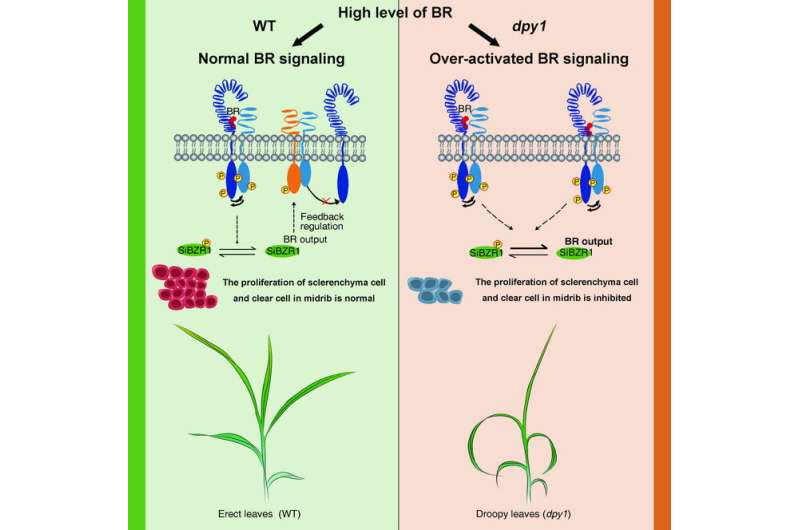Scientists identify modulator of plant architecture in Setaria italica

The leaf is the primary organ for light capture and organic compound synthesis in plants. For cereal crops, leaf architecture is an important agronomic trait that directly determines canopy structure, as well as grain yield.
Setaria italica is a kind of cereal plant typically with large and long leaf blades. However, the leaves droop downward, particularly at the adult stage, adversely affecting canopy structure and grain yield. Identification of key regulators that control leaf droopiness is crucial to improve plant architecture in these crops.
Researchers from the Center for Agricultural Resources Research, Institute of Genetics and Developmental Biology of the Chinese Academy of Sciences, and their collaborators have revealed that DROOPY LEAF1 (DPY1) plays a crucial role in determining leaf droopiness by controlling the brassinosteroid (BR) signaling output in Setaria. It prevents BR signaling from overactivation in response to high doses of BRs to ensure that the long leaf blades grow upward.
The study was published in PNAS on August 17.
The researchers observed that loss-of-function mutation in DPY1 led to malformation of vascular sclerenchyma and low lignin content in leaves, and thus, an extremely droopy leaf phenotype, which is consistent with its preferential expression in leaf vascular tissues.
Through a series of experiments, they found that DPY1 interacted with and competed for SiBAK1 and as a result, caused a sequential reduction in SiBRI1/SiBAK1 interaction, SiBRI1 phosphorylation, and downstream BR signaling in Setaria.
Conversely, DPY1 accumulation and affinity of the DPY1/SiBAK1 interaction are enhanced under BR treatment, thus preventing SiBRI1 from overactivation.
These findings reveal a negative feedback mechanism that represses leaf droopiness by preventing an over-response of early BR signaling to excess BRs, which ensures the upward leaf architecture.
More information: Meicheng Zhao et al. DROOPY LEAF1 controls leaf architecture by orchestrating early brassinosteroid signaling, Proceedings of the National Academy of Sciences (2020). DOI: 10.1073/pnas.2002278117
Journal information: Proceedings of the National Academy of Sciences
Provided by Chinese Academy of Sciences



















